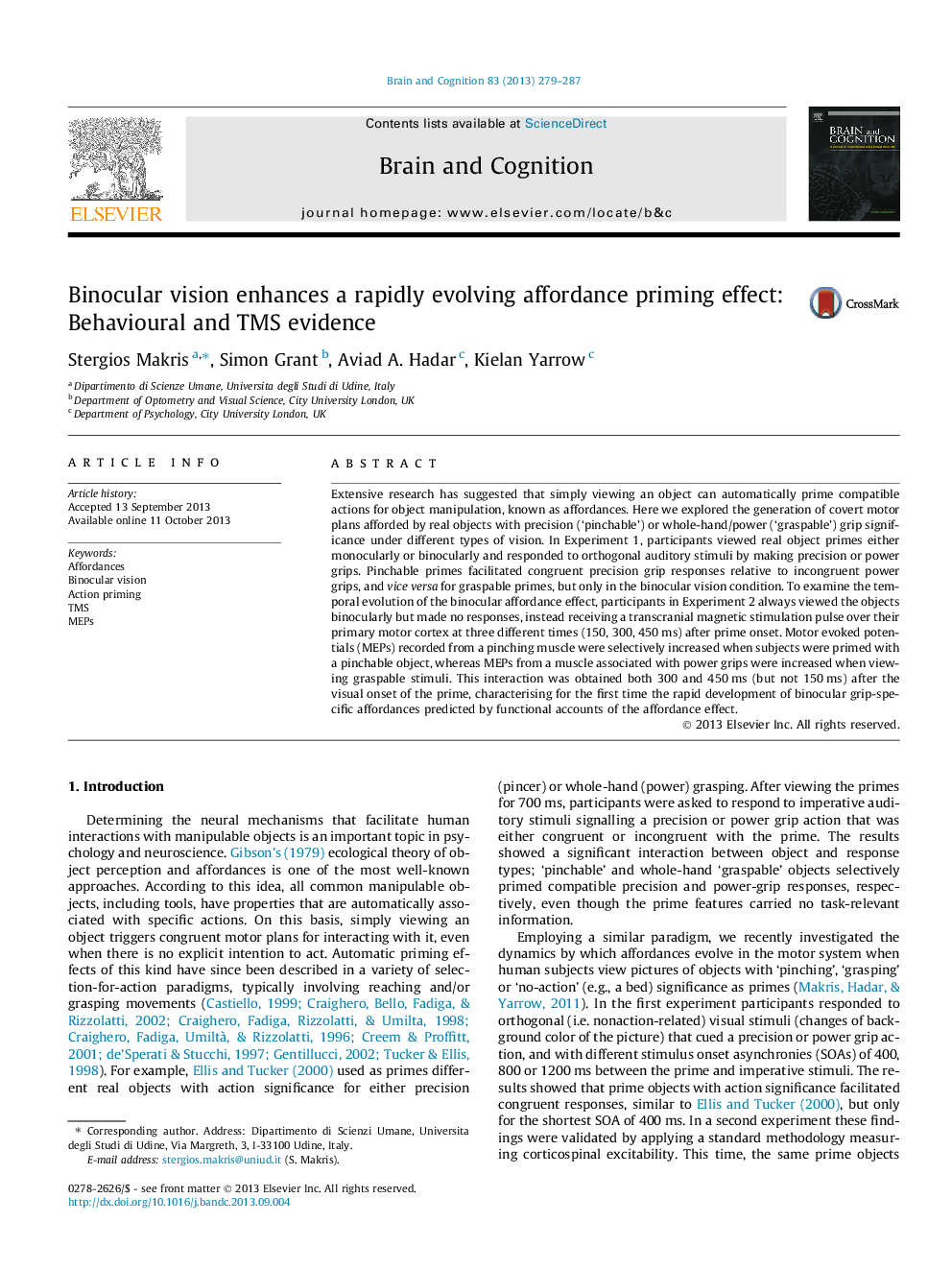| Article ID | Journal | Published Year | Pages | File Type |
|---|---|---|---|---|
| 924345 | Brain and Cognition | 2013 | 9 Pages |
•Object primes automatically generate motor plans known as affordances.•Different objects/tools afford specific kinds of grip actions.•RTs reveal enhanced grip affordances with binocular compared to monocular vision.•TMS reveals affordances have developed 300 ms after object onset, but not at 150 ms.
Extensive research has suggested that simply viewing an object can automatically prime compatible actions for object manipulation, known as affordances. Here we explored the generation of covert motor plans afforded by real objects with precision (‘pinchable’) or whole-hand/power (‘graspable’) grip significance under different types of vision. In Experiment 1, participants viewed real object primes either monocularly or binocularly and responded to orthogonal auditory stimuli by making precision or power grips. Pinchable primes facilitated congruent precision grip responses relative to incongruent power grips, and vice versa for graspable primes, but only in the binocular vision condition. To examine the temporal evolution of the binocular affordance effect, participants in Experiment 2 always viewed the objects binocularly but made no responses, instead receiving a transcranial magnetic stimulation pulse over their primary motor cortex at three different times (150, 300, 450 ms) after prime onset. Motor evoked potentials (MEPs) recorded from a pinching muscle were selectively increased when subjects were primed with a pinchable object, whereas MEPs from a muscle associated with power grips were increased when viewing graspable stimuli. This interaction was obtained both 300 and 450 ms (but not 150 ms) after the visual onset of the prime, characterising for the first time the rapid development of binocular grip-specific affordances predicted by functional accounts of the affordance effect.
